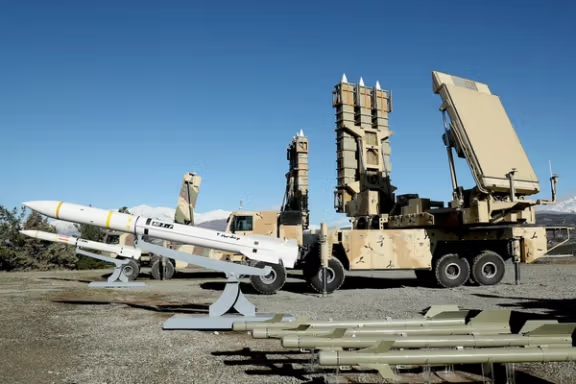Air defenses replaced after damage in war with Israel, Iran says

Iran has replaced air defense systems damaged during last month's conflict with Israel, said Mahmoud Mousavi, the army’s deputy for operations.

Iran has replaced air defense systems damaged during last month's conflict with Israel, said Mahmoud Mousavi, the army’s deputy for operations.
"Some of our air defenses were damaged, this is not something we can hide, but our colleagues have used domestic resources and replaced them with pre-arranged systems that were stored in suitable locations in order to keep the airspace secure," Mousavi added.
During the June conflict, Israel's air force took control of Iranian airspace, delivering a significant blow to the country's air defenses, while Iran's armed forces responded with successive waves of missile and drone attacks on Israeli territory.
“We were able to cover the skies using existing and new systems, securing the airspace of our dear Iran,” he said. “The enemy, despite its desperate efforts, failed to achieve its goals.”
Major General Abdolrahim Mousavi, Chief of Staff of the Armed Forces, also echoed that message. “Air defense proved on the front lines of protecting Iran’s skies that it will resist any level of threat,” he said. “Downing so many enemy aircraft shows the courage and will of our defenders.”
Iran says it has downed several Israeli fighter jets but has not provided any footage or additional details.
Israeli forces struck targets across Iran freely during the 12-day war, including in and around the capital.
Israeli military officials say that 120 air defense systems were destroyed or disabled since the first wave of attacks—around a third of Iran’s pre-war total. Long-range systems, including Russian-supplied S-300s and Iran’s Bavar-373 batteries, were among those targeted.
“Iran relied on a fragmented mix of Russian S-300s, Chinese batteries, and local Bavar-373 systems – none of which were adequately integrated… The air defense radar was Russian and Chinese made, which have known issues of target discrimination, without any integration among bases and military units,” wrote the Global Defense Corp.

Mossad operations and precision strikes
In late June, Israeli Defense Minister Israel Katz directed the military to prepare an enforcement plan against Iran, which includes maintaining air superiority, blocking missile development, and deterring Iran's regional activities.
The plan, according to Katz’s, aimed to ensure Israel can respond kinetically to future threats.
A security source speaking to N12 also said Mossad operatives inside Iran played a central role in shaping the battlespace, deploying loitering munitions and attack drones, and establishing a covert launch site in the heart of Iran to suppress air defenses.
The War Zone website, a resource for the defense industry, released more details of Iran’s defense being destroyed.
“Among the targets reportedly prosecuted by Israeli operatives within Iran was an air defense site near Tehran. Shortly before the operation began, Israeli drones launched from within Iran struck surface-to-air missile launchers there, clearing the way for the larger strike, which also involved Israeli Air Force (IAF) fighter jets."
"This would also explain the apparent inactivity by Iranian air defense sites during the Israeli bombardment. At the same time, the IAF has also been flying suppression and destruction of enemy air defenses (SEAD/DEAD) operations that the service says have destroyed “dozens of radars and surface-to-air missile launchers,” wrote the website.
Airspace remains exposed
Iran’s geographic scale -- roughly 1.6 million square kilometers -- poses a constant challenge for integrated air defense. The Islamic Republic lacks a modern fighter fleet to complement its missile systems and has relied on Cold War-era aircraft. Several of these have been destroyed on the ground in recent strikes, according to Israeli military imagery.
After limited Israeli strikes targeted Iranian missile factories last October, Iran later showcased Russian-made air defenses and its Bavar-373 system to project defensive strength, but Israeli aircraft, including F-35 stealth fighters, encountered little documented resistance during the 12-day conflict.